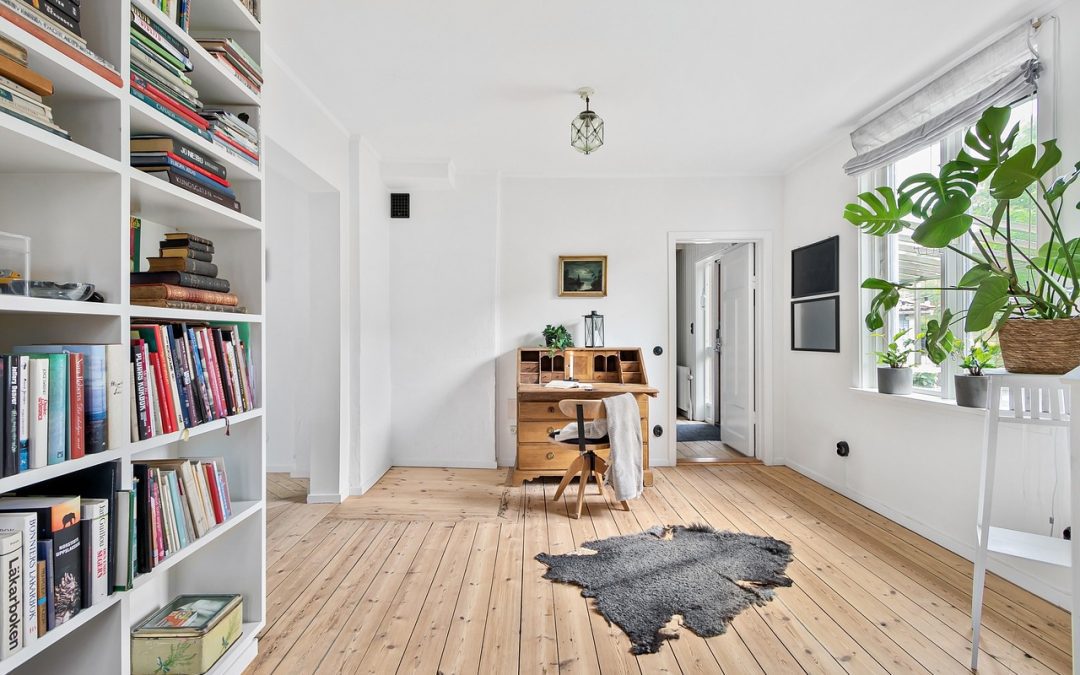Mold is a common problem for homeowners and business owners, so understanding proper mold damage removal is essential. Mold growth can happen quickly, whether from sudden water damage from floods or leaks, lack of ventilation, or high humidity levels. Mold can damage materials that you may not have realized it could affect, such as drywall, furniture, and carpeting. Many homeowners ask us if they can save porous materials during mold remediation, but it’s typically unsafe.
How Mold Grows
Mold needs three things to grow—moisture, darkness, and warmth. Unfortunately, this could describe many areas of your home or business, and it only takes 24 – 48 hours after water leaks, high humidity, or moisture exposure for mold to grow. To make matters worse, the airborne spores are invisible and can land on surfaces that feed them, causing further growth. This can happen on porous and non-porous materials, but porous materials are the most dangerous because they are so absorbent.
When discussing porous materials, we mean drywall, carpet, ceiling tiles, and upholstered furniture. Each has tiny spaces and fibers that quickly absorb moisture and organic particles like dust and dirt. These materials then become “food” for mold, allowing it to spread.
The Problem with Porous Materials
Porous materials have tiny spaces that mold spores easily fit into, making cleaning them impossible. Wiping the surface with mold-killing products may remove the visible mold, but it doesn’t touch the mold spores below the surface. This means mold can continue growing where you cannot see it, leading to more mold damage.
Our favorite example is drywall. It’s highly porous and easily absorbs water. When it becomes wet, mold spores work their way through the layers (and you can’t see them). So even if the outside of the drywall looks clean, the mold does its dirty work behind the scenes.
Health Risks of Mold in Porous Materials
Even though you cannot see mold spores in porous materials, you may suspect they are there if you begin experiencing health issues. Mold releases toxins into the air that may cause health concerns or worsen pre-existing health conditions, such as asthma or allergies. Because porous materials continually absorb mold spores, they multiply, potentially harming your health.
Not everyone has physical reactions to mold spores, but those that do may experience:
- Headaches
- Congestion
- Skin irritation
- Breathing issues
The Limits of DIY Mold Damage Removal
Many homeowners attempt to address mold damage removal themselves, especially for smaller infestations. While DIY mold removal techniques may be effective for non-porous materials, such as tile, metal, or glass, they typically don’t work on porous materials. Bleach and other common household cleaners might remove mold from the surface but cannot reach the mold growth inside the materials.
Attempting to clean porous materials with bleach or other mold removal products can worsen the problem. While they may temporarily kill surface mold, the water content in these cleaners can feed the mold, making it grow.
Professional Mold Remediation: Why Removal is Necessary
The risks of mold in porous materials and how deep the spores can get, professional mold remediation usually involves removing affected materials like drywall and carpeting. At Pinnelli Mold Pros, we use specialized equipment and techniques to safely remove materials, including:
- Drywall: Water-damaged drywall usually requires removal and replacement. These flood cuts remove all mold spores from the home or business, ensuring everyone’s safety.
- Carpeting: Carpet fibers quickly and easily absorb water, helping mold spores grow quickly. Typically, removing the carpet and padding is essential.
- Wood: Porous or semi-porous wood materials, such as framing or subfloors may need to be removed if the mold has penetrated deeply.
- Upholstery and fabrics: Upholstered furniture and other fabrics are usually unsavable. The fibers easily trap the spores, making it impossible to fully clean them.
The Costs of Delaying Mold Damage Removal
We know it can be hard to agree to remove things like carpeting and drywall or discard furniture, but it’s often the most cost-effective and safest method. Delaying mold damage removal can allow mold to continue growing, spreading to other areas of the home. It can also put the health and well-being of its occupants at risk.
Acting quickly to remove porous materials during mold remediation can help limit the problem and prevent future damage. The sooner you address mold growth, the less likely it is to spread to other areas and the lower your overall repair and remediation costs may be.
Preventing: The Key to Protecting Your Home
The best way to protect your home from mold damage is to prevent it from occurring in the first place. Keep your home dry and well-ventilated. Address any water damage or leaks immediately and use dehumidifiers in areas prone to moisture, such as basements and bathrooms.
If you experience water damage, it’s important to dry it out quickly before mold can grow. Porous materials exposed to water for an extended period should be inspected for signs of mold and removed if necessary.
Final Thoughts: Mold Damage Removal
Mold damage is a serious issue that can have lasting consequences for your home and health. While it may be tempting to try to save porous materials with mold growth, doing so can put your home and health at risk. Mold penetrates deep into the fibers and spaces of porous materials, making it impossible to remove completely. Professional mold damage removal often involves removing these materials.
If you have questions about mold damage on your porous materials, contact Pinnelli Mold Pros for your mold inspection. Our professionals will inspect the area and give our professional opinion on the best way to move forward that protects your house and your household members.

